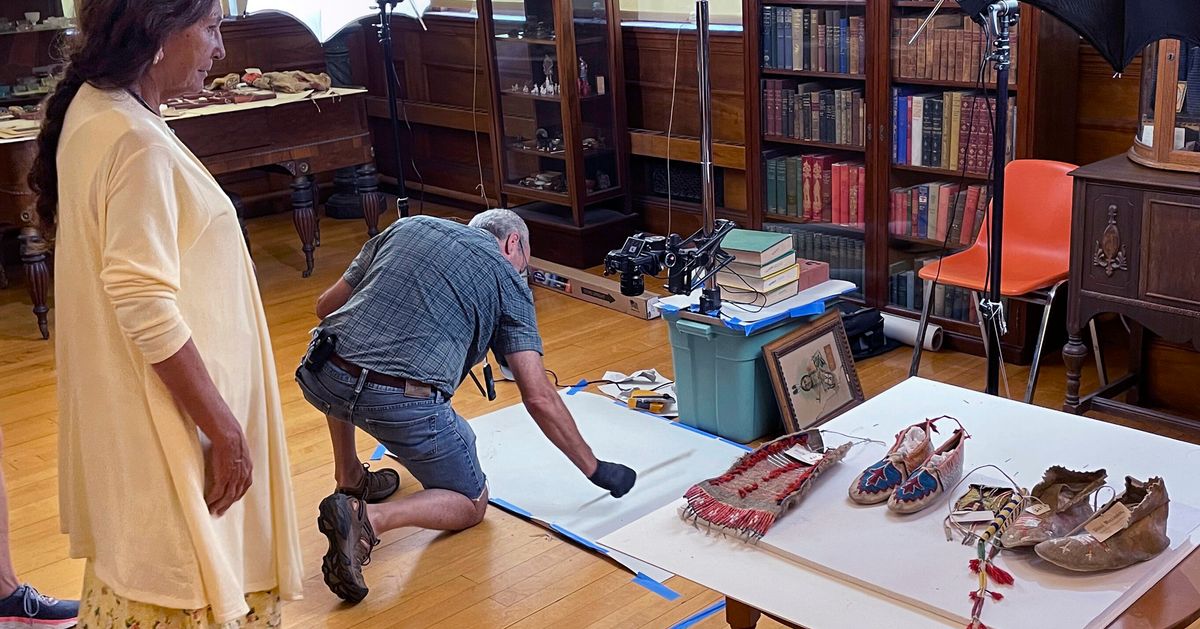After being kept in a small museum in Massachusetts for more than a century, about 150 sacred artifacts from the Lakota and Sioux tribes are now being sent back to them.
Members of the Oglala Sioux and Cheyenne River Sioux Tribes came from South Dakota to get weapons, pipes, moccasins, and clothes. Several of the items are thought to be linked to the Wounded Knee Massacre, which happened in South Dakota in 1890.
They had been stored at the Founders Museum in Barre, Massachusetts, which is about 119 kilometers (74 miles) west of Boston. Recently, there was a public event in the gym of an elementary school in the area. During the ceremony, prayers were said by people from the Lakota tribe. During a formal ceremony that will be held in private, the artifacts will be given to the new owner.
Ever since that Wounded Knee massacre happened, genocides have been instilled in our blood,
said Surrounded Bear, 20, who traveled to Barre from the Pine Ridge Indian Reservation, according to The Boston Globe.
And for us to bring back these artifacts, that’s a step towards healing. That’s a step in the right direction.
Repatriation was a process that had been going on for a long time and had been working on for decades. The ceremony marked the end of all that work.
It was always important to me to give them back,” said Ann Meilus, president of the board at the Founders Museum. “I think the museum will be remembered for being on the right side of history for returning these items.
About 870,000 Native American artifacts are held by some of the most prestigious educational institutions, cultural institutions, and even the federal government in the United States. The artifacts that are being returned are a very small part of that number. This number includes the remains of almost 110,000. The Native American Graves Protection and Repatriation Act of 1990 say that they must be given to the native communities where they belong.
Officials from the museum have said that even though the institution is not subject to NAGPRA because it is a private institution that does not get federal funding, the museum should return items from its collection that belong to indigenous tribes because it is the right thing to do.
More than 200 people of all ages, including men, women, children, and the elderly, were killed in the Wounded Knee Massacre in 1890 on the Pine Ridge Indian Reservation. One hundred years after the Wounded Knee Massacre, which is thought to be one of the worst killings of Native Americans in U.S. history, the U.S. Congress sent a formal apology to the Sioux Nation.
The Indigenous collection was bought by the Barre museum by a traveling shoe salesman named Frank Root. During his travels in the 19th century, Root bought the items. Root once had a roadshow that was as big as P.T. Barnum’s shows, and it was during this time that he put together his collection.
Wendell Yellow Bull, a descendant of Wounded Knee victim Joseph Horn Cloud, said that the items will be kept at Oglala Lakota College until tribal leaders decide what to do with them.
All of the things that will be given back to the Sioux have been checked out and approved by experts, including Sioux experts. There are also things from other native peoples in the museum, some of which are not thought to have come from the Sioux.









